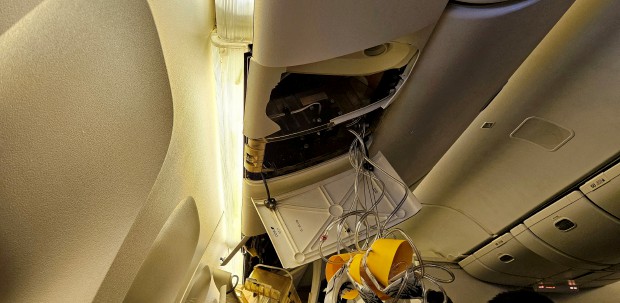SINGAPORE: Preliminary investigations into the recent incident on Singapore Airlines flight SQ321, which was hit by severe turbulence, found that the rapid change in gravitational force (G) leading to a drop in altitude likely resulted in injuries to the crew and passengers.
SQ321 was enroute to Singapore from London last Tuesday (May 21) when it encountered severe turbulence, causing the plane to make an emergency diversion to Bangkok, Thailand. One passenger died and dozens were injured following the incident.
Singapore's Ministry of Transport (MOT) on Wednesday released the Transport Safety Investigation Bureau of Singapore's (TSIB) preliminary investigation findings of the incident, of which TSIB has extracted the data stored in the flight data recorder (FDR) and cockpit voice recorder (CVR) of flight SQ321.
"Investigations are ongoing," said MOT.
The preliminary report found that SQ321 departed London on May 20 and the flight was normal prior to the turbulence event.
The aircraft was passing over southern Myanmar at 37,000 ft and likely flying over an area of developing convective activity at 07:49:21 hr (UTC) on May 21 when the G-force fluctuated between +0.44G and +1.57G for a period of about 19 seconds, causing the flight to begin experiencing slight vibrations, the report said.
"At 07:49:40 hr, the aircraft experienced a rapid change in G as recorded vertical acceleration decreased from +1.35G to -1.5G within 0.6 seconds. This likely resulted in the occupants who were not belted becoming airborne," MOT said.
"At 07:49:41 hr, the vertical acceleration changed from -1.5G to +1.5G within four seconds. This likely resulted in the airborne occupants falling back down," it added.
The report found that the aircraft experienced rapid changes in G over 4.6 seconds, with an altitude drop of 178 ft, from 37,362 ft to 37,184 ft.
"This sequence of events likely caused the injuries to the crew and passengers," MOT said.
Meanwhile, Singapore Airlines in a statement said it acknowledges the findings and is fully cooperating with relevant authorities in the ongoing investigations into the incident. – BERNAMA





